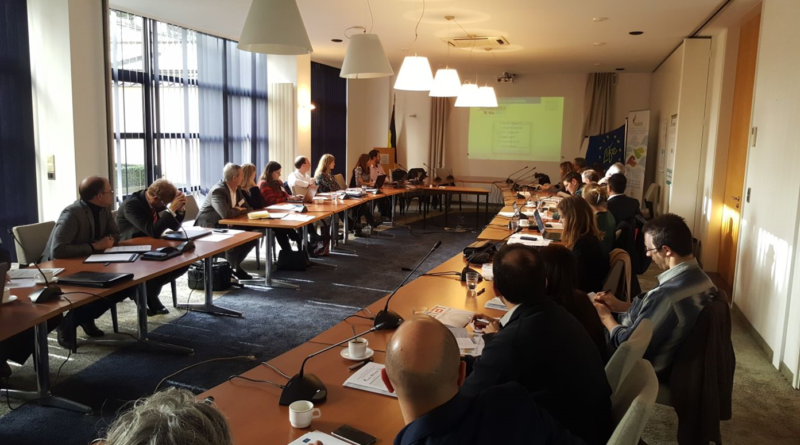Alternative Flame Retardants discussed at LIFE-FLAREX Stakeholder’s Workshop
This event brought together a total of 32 relevant stakeholders (chemical producers, textile industries, industrial associations and groups of interest) coming from organizations in 8 European countries (Belgium, France, The Netherlands, Sweden, Germany, Finland, United Kingdom and Spain).
The event raised constructive comments towards the flame retardant and a selection of representative textile products carried out by FLAREX project as a preparatory action, and provided large interest in collaboration with the project from relevant stakeholders, as well as highlighted ways forward and challenges to chemical replacement in textile sector.
The aim of the workshop was to discuss among experts of different competences the advances and alternatives for implementation of chemical substitution policies in the textile industry, particularly on the use of flame retardants for home textiles/contract markets including carpets, upholstery for furniture and other products such as mattresses or curtains.
During the discussions, several flame retardant producers mentioned that they have alternatives available or ready to market with performance matching conventional technology. These solutions are still more expensive due to lack of demand, according to the producers, and their applicability in the textile sector still needs to be examined. In addition to the cost, participating textile companies pointed out that alternatives need to match specific requirements of textiles such as fabric composition and therefore the applicability of alternatives shall be done on a case-by-case basis.
There was a debate on the lack of harmonized regulations on fire safety and public procurement requirements across the union, even at regional level, which increases the costs for SMEs and limits the benefits of the single market. Several participants highlighted the need to harmonize public procurement across Europe including sustainability parameters in the selection criteria to favor the shift to more sustainable flame retardants and increase the competiveness of European SMEs in the textile sector.
A recurrent topic emerged during the workshop on the lack of market pull for alternative flame retardants, meaning consumers (individuals and organizations such as public bodies) are often not aware of flame retardants used in textiles to comply with safety specifications nor their consequences for the environment and health. Awareness on the consumer side might lead to different purchasing choices. Moreover, the switch to safer alternatives, where possible, is mainly driven by the existence of a legislation imposing the limitation of the use of certain hazardous substances. In absence of such legislation and in the absence of feasible alternatives there is no strong driver for substitution towards safer alternatives.
LIFE-FLAREX team has just published a full report, available here, with further details on the outcomes from the Stakeholder’s workshop and the participation.
All the presentations from the event are available here.
LIFE-FLAREX project next steps are to assess and demonstrate the suitability of alternative flame retardants by benchmarking with conventional products, first at lab scale and later at industrial level. The demonstration will include technical performance, environmental impact, exposure and toxicological assessments. In parallel, further workshops will be organized at regional level in Italy, Czech Republic and Spain to raise awareness and at later stages of the project at EU level presenting the key results of the project to European-wide Stakeholders.
This communication does not necessarily represent the official opinion of the European Chemicals Agency, EURATEX or LIFE-FLAREX team but aims at summarizing the main outcomes of the workshop discussions. The European Chemicals Agency, EURATEX and LIFE-FLAREX are not responsible for the use that may be made of the information contained in this communication.

